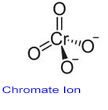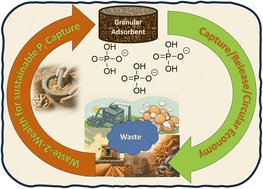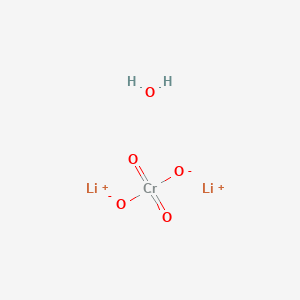SECTION 1. IDENTIFICATION
Product Name: Lithium Chromate Hydrate
Product Number: All applicable American Elements product codes, e.g. LI-CRAT-02-C.XHYD
, LI-CRAT-03-C.XHYD
, LI-CRAT-04-C.XHYD
, LI-CRAT-05-C.XHYD
CAS #: 7789-01-7
Relevant identified uses of the substance: Scientific research and development
Supplier details:
American Elements
10884 Weyburn Ave.
Los Angeles, CA 90024
Tel: +1 310-208-0551
Fax: +1 310-208-0351
Emergency telephone number:
Domestic, North America: +1 800-424-9300
International: +1 703-527-3887
SECTION 2. HAZARDS IDENTIFICATION
Classification of the substance or mixture in accordance with 29 CFR 1910 (OSHA HCS)
GHS08 Health hazard
Carc. 1B
H350 May cause cancer.
GHS07
Skin Sens. 1 H317 May cause an allergic skin reaction.
Hazards not otherwise classified
No information known.
Label elements
GHS label elements
The product is classified and labeled in accordance with 29 CFR 1910 (OSHA HCS)
Hazard pictograms


GHS07 GHS08
Signal word
Danger
Hazard statements
H317 May cause an allergic skin reaction.
H350 May cause cancer.
Precautionary statements
P201
Obtain special instructions before use.
P261
Avoid breathing dust/fume/gas/mist/vapors/spray
P280
Wear protective gloves/protective clothing/eye protection/face protection.
P308+P313 IF exposed or concerned: Get medical advice/attention.
P405
Store locked up.
P501
Dispose of contents/container in accordance with local/regional/national/international regulations.
WHMIS classification
D2A - Very toxic material causing other toxic effects
Classification system
HMIS ratings (scale 0-4)
(Hazardous Materials Identification System)
Health (acute effects) = 2
Flammability = 0
Physical Hazard = 1
Other hazards
Results of PBT and vPvB assessment
PBT:
Not applicable.
vPvB:
Not applicable.
SECTION 3. COMPOSITION/INFORMATION ON INGREDIENTS
Chemical characterization: Substances
CAS# Description:
7789-01-7 Lithium chromate hydrate
Identification number(s):
EC number: 238-244-7
SECTION 4. FIRST AID MEASURES
Description of first aid measures
After inhalation
Supply fresh air. If required, provide artificial respiration. Keep patient warm.
Seek immediate medical advice.
After skin contact
Immediately wash with water and soap and rinse thoroughly.
Seek immediate medical advice.
After eye contact
Rinse opened eye for several minutes under running water. Then consult a doctor.
After swallowing
Seek medical treatment.
Information for doctor
Most important symptoms and effects, both acute and delayed
May cause an allergic skin reaction.
May cause cancer.
Indication of any immediate medical attention and special treatment needed
No further relevant information available.
SECTION 5. FIREFIGHTING MEASURES
Extinguishing media
Suitable extinguishing agents
Product is not flammable. Use fire-fighting measures that suit the surrounding fire.
Special hazards arising from the substance or mixture
If this product is involved in a fire, the following can be released:
Toxic metal oxide fume
Lithium oxide
Advice for firefighters
Protective equipment:
Wear self-contained respirator.
Wear fully protective impervious suit.
SECTION 6. ACCIDENTAL RELEASE MEASURES
Personal precautions, protective equipment and emergency procedures
Wear protective equipment. Keep unprotected persons away.
Ensure adequate ventilation
Environmental precautions:
Do not allow product to reach sewage system or any water course.
Methods and material for containment and cleaning up:
Dispose of contaminated material as waste according to section 13.
Ensure adequate ventilation.
Prevention of secondary hazards:
No special measures required.
Reference to other sections
See Section 7 for information on safe handling
See Section 8 for information on personal protection equipment.
See Section 13 for disposal information.
Protective Action Criteria for Chemicals
PAC-1:
Substance is not listed.
PAC-2:
Substance is not listed.
PAC-3:
Substance is not listed.
SECTION 7. HANDLING AND STORAGE
Handling
Precautions for safe handling
Keep container tightly sealed.
Store in cool, dry place in tightly closed containers.
Ensure good ventilation at the workplace.
Open and handle container with care.
Information about protection against explosions and fires:
The product is not flammable
Conditions for safe storage, including any incompatibilities
Storage
Requirements to be met by storerooms and receptacles:
No special requirements.
Information about storage in one common storage facility:
Store away from oxidizing agents.
Further information about storage conditions:
Keep container tightly sealed.
Store in cool, dry conditions in well sealed containers.
Specific end use(s)
No further relevant information available.
SECTION 8. EXPOSURE CONTROLS/PERSONAL PROTECTION
Additional information about design of technical systems:
Properly operating chemical fume hood designed for hazardous chemicals and having an average face velocity of at least 100 feet per minute.
Control parameters
Components with limit values that require monitoring at the workplace:
The product does not contain any relevant quantities of materials with critical values that have to be monitored at the workplace.
Additional information:
No data
Exposure controls
Personal protective equipment
General protective and hygienic measures
The usual precautionary measures for handling chemicals should be followed.
Keep away from foodstuffs, beverages and feed.
Remove all soiled and contaminated clothing immediately.
Wash hands before breaks and at the end of work.
Store protective clothing separately.
Maintain an ergonomically appropriate working environment.
Breathing equipment:
Use suitable respirator when high concentrations are present.
Protection of hands:
Impervious gloves
Check protective gloves prior to each use for their proper condition.
The selection of suitable gloves not only depends on the material, but also on quality. Quality will vary from manufacturer to manufacturer.
Penetration time of glove material (in minutes)
Not determined
Eye protection:
Safety glasses with side shields / NIOSH (US) or EN 166(EU)
Body protection:
Protective work clothing.
SECTION 9. PHYSICAL AND CHEMICAL PROPERTIES
Information on basic physical and chemical properties
General Information
Appearance:
Form: Powder
Odor: Not determined
Odor threshold: Not determined.
pH-value: Not applicable.
Change in condition
Melting point/Melting range: Not determined
Boiling point/Boiling range: Not determined
Sublimation temperature / start: Not determined
Flammability (solid, gaseous)
Not determined.
Ignition temperature: Not determined
Decomposition temperature: Not determined
Auto igniting: Not determined.
Danger of explosion: Not determined.
Explosion limits:
Lower: Not determined
Upper: Not determined
Vapor pressure: Not applicable.
Density: Not determined
Relative density
Not determined.
Vapor density
Not applicable.
Evaporation rate
Not applicable.
Solubility in / Miscibility with Water: Not determined
Partition coefficient (n-octanol/water): Not determined.
Viscosity:
dynamic: Not applicable.
kinematic: Not applicable.
Other information
No further relevant information available.
SECTION 10. STABILITY AND REACTIVITY
Reactivity
No information known.
Chemical stability
Stable under recommended storage conditions.
Thermal decomposition / conditions to be avoided:
Decomposition will not occur if used and stored according to specifications.
Possibility of hazardous reactions
Reacts with strong oxidizing agents
Conditions to avoid
No further relevant information available.
Incompatible materials:
Oxidizing agents
Hazardous decomposition products:
Toxic metal oxide fume
Lithium oxide
SECTION 11. TOXICOLOGICAL INFORMATION
Information on toxicological effects
Acute toxicity:
No effects known.
LD/LC50 values that are relevant for classification:
No data
Skin irritation or corrosion:
May cause irritation
Eye irritation or corrosion:
May cause irritation
Sensitization:
May cause an allergic skin reaction.
Germ cell mutagenicity:
No effects known.
Carcinogenicity:
May cause cancer.
EPA-A: human carcinogen: sufficient evidence from epidemiologic studies to support a causal association between exposure and cancer.
IARC-1: Carcinogenic to humans: sufficient evidence of carcinogenicity.
ACGIH A1: Confirmed human carcinogen: Agent is carcinogenic to humans based on epidemiologic studies of, or convincing clinical evidence in, exposed humans.
NTP-K: Known to be carcinogenic: sufficient evidence from human studies.
Reproductive toxicity:
No effects known.
Specific target organ system toxicity - repeated exposure:
No effects known.
Specific target organ system toxicity - single exposure:
No effects known.
Aspiration hazard:
No effects known.
Subacute to chronic toxicity:
No effects known.
Additional toxicological information:
To the best of our knowledge the acute and chronic toxicity of this substance is not fully known.
SECTION 12. ECOLOGICAL INFORMATION
Toxicity
Aquatic toxicity:
No further relevant information available.
Persistence and degradability
No further relevant information available.
Bioaccumulative potential
No further relevant information available.
Mobility in soil
No further relevant information available.
Ecotoxical effects:
Remark:
Very toxic for aquatic organisms
Additional ecological information:
General notes:
Do not allow product to reach ground water, water course or sewage system.
Danger to drinking water if even small quantities leak into the ground.
Also poisonous for fish and plankton in water bodies.
May cause long lasting harmful effects to aquatic life.
Avoid transfer into the environment.
Very toxic for aquatic organisms
Results of PBT and vPvB assessment
PBT:
Not applicable.
vPvB:
Not applicable.
Other adverse effects
No further relevant information available.
SECTION 13. DISPOSAL CONSIDERATIONS
Waste treatment methods
Recommendation
Consult state, local or national regulations to ensure proper disposal.
Uncleaned packagings:
Recommendation:
Disposal must be made according to official regulations.
SECTION 14. TRANSPORT INFORMATION
UN-Number
DOT, IMDG, IATA
UN3077
UN proper shipping name
DOT
Environmentally hazardous substances, solid, n.o.s. (Lithium chromate)
ADR
3077 Environmentally hazardous substances, solid, n.o.s. (Lithium chromate)
IMDG, IATA
ENVIRONMENTALLY HAZARDOUS SUBSTANCE, SOLID, N.O.S. (Lithium chromate)
Transport hazard class(es)
DOT, IMDG
Class
9 Miscellaneous dangerous substances and articles
Label
9
ADR
Class
9 (M7) Miscellaneous dangerous substances and articles
Label
9
IATA
Class
9 Miscellaneous dangerous substances and articles
Label
9
Packing group
DOT, ADR, IMDG, IATA
III
Environmental hazards:
Special marking (ADR):
Symbol (fish and tree)
Special marking (IATA):
Symbol (fish and tree)
Special precautions for user
Warning: Miscellaneous dangerous substances and articles
EMS Number: F-A,S-F
Stowage Category
A
Stowage Code
SW23 When transported in BK3 bulk container, see 7.6.2.12 and 7.7.3.9.
Transport in bulk according to Annex II of MARPOL73/78 and the IBC Code
Not applicable.
Transport/Additional information:
DOT
Quantity limitations
On passenger aircraft/rail: No limit
On cargo aircraft only: No limit
Marine Pollutant (DOT):
No
IMDG
Limited quantities (LQ)
5 kg
Excepted quantities (EQ)
Code: E1
Maximum net quantity per inner packaging: 30 g
Maximum net quantity per outer packaging: 1000 g
UN "Model Regulation":
UN 3077 ENVIRONMENTALLY HAZARDOUS SUBSTANCES, SOLID, N.O.S.(LITHIUM CHROMATE), 9, III
SECTION 15. REGULATORY INFORMATION
Safety, health and environmental regulations/legislation specific for the substance or mixture
GHS label elements
The product is classified and labeled in accordance with 29 CFR 1910 (OSHA HCS)
Hazard pictograms
GHS07
GHS08
Signal word
Danger
Hazard statements
H317 May cause an allergic skin reaction.
H350 May cause cancer.
Precautionary statements
P201
Obtain special instructions before use.
P261
Avoid breathing dust/fume/gas/mist/vapors/spray
P280
Wear protective gloves/protective clothing/eye protection/face protection.
P308+P313 IF exposed or concerned: Get medical advice/attention.
P405
Store locked up.
P501
Dispose of contents/container in accordance with local/regional/national/international regulations.
National regulations
All components of this product are listed in the U.S. Environmental Protection Agency Toxic Substances Control Act Chemical substance Inventory.
All components of this product are listed on the Canadian Domestic Substances List (DSL).
SARA Section 313 (specific toxic chemical listings)
7789-01-7 Lithium chromate dihydrate
California Proposition 65
Prop 65 - Chemicals known to cause cancer
7789-01-7 Lithium chromate dihydrate
Prop 65 - Developmental toxicity
7789-01-7 Lithium chromate dihydrate
Prop 65 - Developmental toxicity, female
7789-01-7 Lithium chromate dihydrate
Prop 65 - Developmental toxicity, male
7789-01-7 Lithium chromate dihydrate
Information about limitation of use:
For use only by technically qualified individuals.
This product is subject to the reporting requirements of section 313 of the Emergency Planning and Community Right to Know Act of 1986 and 40CFR372.
Other regulations, limitations and prohibitive regulations
Substance of Very High Concern (SVHC) according to the REACH Regulations (EC) No. 1907/2006.
Substance is not listed.
The conditions of restrictions according to Article 67 and Annex XVII of the Regulation (EC) No 1907/2006 (REACH) for the manufacturing, placing on the market and use must be observed.
Substance is not listed.
Annex XIV of the REACH Regulations (requiring Authorisation for use)
Substance is not listed.
Chemical safety assessment:
A Chemical Safety Assessment has not been carried out.
SECTION 16. OTHER INFORMATION
Safety Data Sheet according to Regulation (EC) No. 1907/2006 (REACH). The above information is believed to be correct but does not purport to be all inclusive and shall be used only as a guide. The information in this document is based on the present state of our knowledge and is applicable to the product with regard to appropriate safety precautions. It does not represent any guarantee of the properties of the product. American Elements shall not be held liable for any damage resulting from handling or from contact with the above product. See reverse side of invoice or packing slip for additional terms and conditions of sale. COPYRIGHT 1997-2022 AMERICAN ELEMENTS. LICENSED GRANTED TO MAKE UNLIMITED PAPER COPIES FOR INTERNAL USE ONLY.

 The number of electrons in each of Chromium's shells is 2, 8, 13, 1 and its electron configuration is [Ar] 3d5 4s1. Louis Nicolas Vauquelin first discovered chromium in 1797 and first isolated it the following year. The chromium atom has a radius of 128 pm and a Van der Waals radius of 189 pm. In its elemental form, chromium has a lustrous steel-gray appearance.
The number of electrons in each of Chromium's shells is 2, 8, 13, 1 and its electron configuration is [Ar] 3d5 4s1. Louis Nicolas Vauquelin first discovered chromium in 1797 and first isolated it the following year. The chromium atom has a radius of 128 pm and a Van der Waals radius of 189 pm. In its elemental form, chromium has a lustrous steel-gray appearance.  Chromium is the hardest
Chromium is the hardest  See more Lithium products.
See more Lithium products. Compared to other metals, it has one of the lowest boiling points. In its elemental form, lithium is soft enough to cut with a knife its silvery white appearance quickly darkens when exposed to air. Because of its high reactivity, elemental lithium does not occur in nature. Lithium is the key component of
Compared to other metals, it has one of the lowest boiling points. In its elemental form, lithium is soft enough to cut with a knife its silvery white appearance quickly darkens when exposed to air. Because of its high reactivity, elemental lithium does not occur in nature. Lithium is the key component of 
